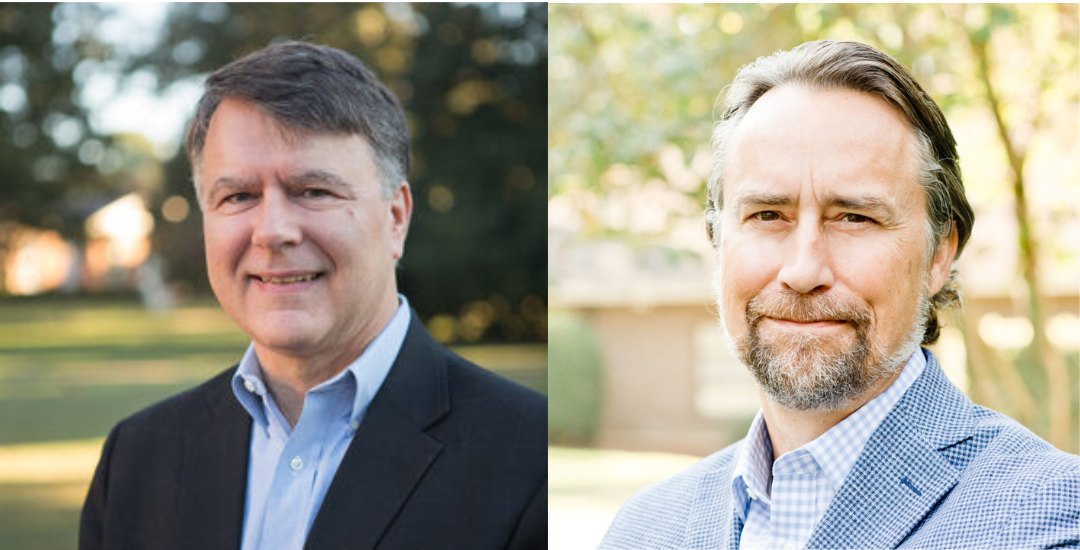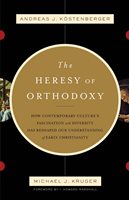Today we conclude our interview with Dr. Michael Kruger about his work, co-authored with Dr. Andreas Köstenberger, The Heresy of Orthodoxy: How Contemporary Culture’s Fascination with Diversity Has Reshaped Our Understanding of Early Christianity. If you missed yesterday’s interview, you can catch up here.
Fred Zaspel:
This is a big question, and we realize you can’t reproduce your book here – but we would like a taste! Can you give us a sampling of the major types of flaws you find with the Bauer thesis on this score? In his endorsement on the back of your book, D.A. Carson refers to the Bauer thesis as “historical nonsense” – can you perhaps fill that in for us a bit?
Michael Kruger:
An example of the type of historical “nonsense” put out by advocates of the Bauer thesis would be the argument that Gnostic Christianity, most aptly represented by the Gospel of Thomas, was just as early and just as popular as “orthodox” Christianity. But, there is very little evidence to support this idea. Gnosticism was a late-comer, and does not show up until the end of the first century at the earliest, and was not fully established until the second century. This alone eliminates it as a contender for an “original” version of Christianity dating from the first century. Moreover, Gnosticism was widely condemned in virtually all corners of the Christian movement at the time, showing it to be a marginal version of the faith (although still dangerous). In addition, Gnostic writings like Thomas were themselves late productions and widely condemned by virtually all early patristic sources. Unless one wants to go down the route of conspiracy theories – suggesting that evidence was suppressed and hidden – all roads lead to the conclusion that Gnostic Christianity was not original.
Zaspel:
Summarize for us your own thesis. If the evidence does not support Bauer-Ehrman, then what does it have to say? What is the relation of “orthodoxy” to Jesus and the apostles?
Kruger:
We argue that orthodox Christianity ought to be determined by the historical sources that take us back to the apostles themselves, the earliest followers of Jesus. The apostles, more than any other historical figures, can provide access to what Jesus really said and did, and can provide a reliable guide to earliest Christian teaching. The documents that get us back to the apostles, we argue, are the NT writings themselves. Not only are they the earliest Christian writings we possess, but they are the only ones with historically credible apostolic connections.
Zaspel:
Tell us about “the Rule of Faith” and how it is significant in this discussion.
Kruger:
Advocates of the Bauer-Ehrman thesis often point out that there could be no “orthodoxy” in the earliest phases of Christianity because there was no New Testament for people to appeal to as an arbitrator of disputes. In other words, there was no agreed-upon standard of doctrine in the earliest stages, prior the formation of the canon. However, such an argument overlooks the role played by the “rule of faith.” This “rule” was just a summary of apostolic teaching passed along in oral form, prior to the formation of the NT canon. One might think of it as a creedal summary of sorts that was widely known and widely used by a number of the key players in the early church such as Irenaeus, Hippolytus, Clement of Alexandria, Tertullian, and Origen. The existence of the rule of faith demonstrates that there was something called “orthodoxy” that many knew about and agreed upon.
Zaspel:
How has the Bauer thesis reshaped understandings of the New Testament canon and transmission of the text?
Kruger:
Bauer’s thesis is not just about competing theologies, but it also about the various books written to summarize and popularize those competing theologies. So, each version of Christianity in the earliest centuries had their own set of books (i.e., their own “canon”) which they looked to for guidance and support. So, says Bauer, why would you think the 27 books that happened to end up in our New Testaments are any more legitimate than the other books that were left out? If another group had won the theological war, we would be reading a very different set of books. Thus, as you can see, Bauer’s thesis is the foundation for modern deconstructions of the New Testament canon.
Zaspel:
Without going into details, what kind of evidence do we have that indicates that the category of canon was in fact part of the understanding of the early church?
Kruger:
In our book, we argue that the idea of a canon was not something that was brand new for the earliest Christians. It was not something that would have surprised them, nor would it have been entirely unexpected. The earliest believers were Jews who knew the history of God’s dealings with Israel. When God made a covenant with Israel, He gave covenantal documents that testified to the terms of that covenant – a written contract if you will. Those covenantal documents are what we now call the Old Testament canon. Thus, Jews understood there to be a very tight connection between covenants and written documents. The two went hand in hand. So, when Jesus declared that he was inaugurating a new covenant, it is reasonable to think that the earliest followers of Jesus would have expected new written documents to accompany that new arrangement. Thus, the idea of canon was built into the DNA of the Christian faith.
Zaspel:
And can you give us a taste of the kind of evidence we have regarding the reliability of the New Testament text?
Kruger:
We cover a lot of territory in our book regarding the transmission of the New Testament text. But, one key fact that gives us confidence that the text has been reliably preserved is the high number of New Testament manuscripts that have been discovered. If you want assurance that you have the original words (preserved somewhere in the tradition), the more manuscripts you have the better. In the case of the New Testament, the evidence is overwhelmingly positive. While the average ancient document has maybe 10-20 extant manuscripts, the New Testament has over 5,700 (and counting). This provides great confidence that the New Testament text has not been lost or corrupted.
Zaspel:
You make a powerful case in your book that the Bauer thesis is completely untenable and in fact contrary to the evidence, and as you mention there have been plenty of others who have made this case more thoroughly, dismantling the Bauer thesis in whole and in all its parts. So what is it that makes the Bauer thesis so attractive? And please explain how it is reflective of our age.
Kruger:
The Bauer thesis is popular because it shares the same core value as our modern world: diversity. Our culture not only puts a high premium on diversity of viewpoints, but, more importantly, concludes that these diverse viewpoints prove no one view can be correct. Precisely the same move is made by Bauer and Ehrman. Because there were different versions of Christianity, therefore no single version of Christianity can possibly be original or correct. In the end, the Bauer-Ehrman thesis is very postmodern in its outlook on truth.
Zaspel:
One last question. Students entering university may well run into these kinds of assaults on Christian foundations, and Bart Ehrman of course has been very successful at advancing the Bauer thesis on a popular level. What counsel can you give in light of all this – for students, pastors, churches?
Kruger:
As for churches, we encourage them to place more effort on preparing students for the type of intellectual challenges they will hear in college (and not just moral challenges). It is important not only that we help students know what to believe, but that we help them know why they should believe it. As for students, we encourage them to remember that the arguments they hear in college are by no means new or original. They have been made before, and they have been answered before. Students need to patiently wade into the discussion, relying on helpful Christian resources, and trusting that there is an answer to the challenges they are hearing, even if they do not yet know what that answer might be.
Editor’s Note:
If you missed Part 1 of this interview, you can catch up here.
You will also want to see our interview with Andreas Köstenberger here and here.

